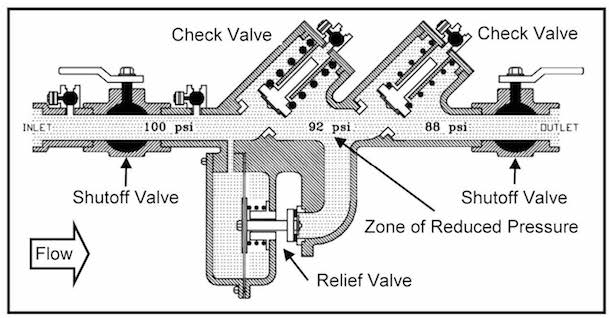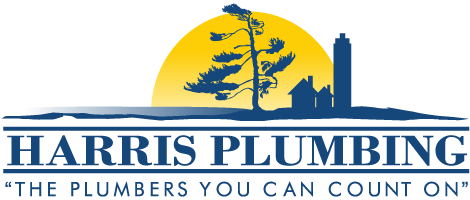Getting to know your backflow prevention system

A backflow prevention system is made of various parts that work together to maintain and control healthy pipe flow and to prevent your water from becoming contaminated by toxins, pollutants, and debris. As a result of backflow prevention installation, your water will taste, look, smell, and flow better.
Ensuring Our Drinking Water Is Safe
Water is transferred to your property under pressure from your city’s main line and enters a cross connection. In this cross-connection, one pipe provides your home with clean drinking water, and the other is for irrigation*. On the irrigation line, a backflow prevention device must be installed to protect your drinking water from ever interacting with the irrigation line, which would cause backsiphonage* to enter your home.
As part of Ontario’s initiative to prevent the contamination of drinking water, Ontario Regulation 332/12, effective January 1st, 2014, provided new laws and regulations that surround safe drinking water, water treatment systems, protection from contamination, and more. To learn more about backflow prevention in Ontario, download ‘A Guide for Drinking Water System Owners Seeking To Undertake a Backflow Prevention Program’.
Irrigation*
The application of controlled amounts of water used for planting, landscaping, and crop growth purposes.
Backsiphonage*
The reversal of normal flow in a water system, caused by reduced pressure in the supply. Backsiphonage can pull contaminants into your drinking water as a result.
Commercial Property Owners
Annual Testing
Should you receive notice from your municipality notifying you of a requirement of annual backflow testing on a device (or devices) currently within your building, they will give you a deadline by which you need to contact an approved backflow contractor like Harris Plumbing to perform the device test procedures.
Approved contractors have specific qualifications, training, and carry the appropriate insurance to satisfy your municipality’s requirements. Harris Plumbing’s backflow prevention test service also includes the processing of all necessary documentation required by your municipality on your behalf taking the burden and confusion off your plate. We will ensure that your properties are compliant each year.
Should your device “fail” the test, repairs or replacement will be required then the device is re-tested and must “pass”. Proof of the “pass” must be forwarded to the town.
Backflow Surveys
Your municipality will notify you by mail if you need to have a backflow survey performed at your property to identify any hazardous cross connections in your plumbing systems. Surveys must be completed every five years by a “qualified person” and be submitted to the municipality.
Once your municipality mails you their installation requirements with a deadline, Harris Plumbing will perform the required work, test the devices, submit documentation on your behalf, and ensure your compliancy.
Backflow Installation
Harris Plumbing is an approved backflow contractor with many municipalities. Our knowledgeable backflow specialists are highly trained and must re-qualify their training according to provincial by-laws. Should your survey indicate that backflow prevention devices are required on your plumbing systems, they will perform the necessary work, test the devices, and provide the appropriate documentation to your town.
How A Backflow Prevention Device Works
When the pressure on the inlet side of your prevention device exceeds 2psi, water flows through the sensing line and fills the upper chamber of the system’s diaphragm. This pressure depresses the spring that closes the release valve.

When the pressure exceeds 5psi, the first check valve will open, and the main zone will fill with water. Once filled, the second zone will open, allowing water to pass through. When the inlet shut off valve is closed, the first check valve closes, followed by the second check valve. No backflow is permitted through the system as it is discarded through the relief valve.
What Makes A Backflow Prevention Device Malfunction
There are three common reasons your backflow prevention device may malfunction. These reasons include debris getting launched and stuck in your system, changes in the pressure of the city’s water system, and water main breaks.
Contact Harris Plumbing Today!
Should your backflow prevention device malfunction or breakdown, you’ll require the professional assistance of someone who understands the many complex parts of your system. The plumbers at Harris Plumbing can assess your issue and provide the parts and repair service you’ll need. We are equipped to provide you with:
- Backflow Prevention Device Installations
- Backflow Prevention Device Annual Inspections & Testing
- Backflow Prevention Surveys & Consultations
To learn more about our backflow prevention services give us a call today!
Call Us 1-866-786-1801
